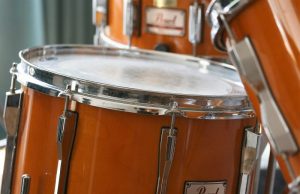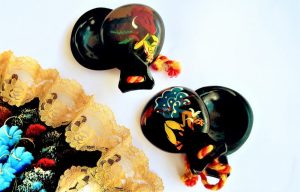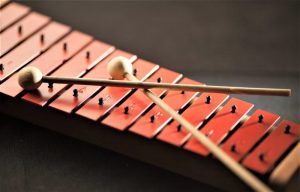Acoustic guitar
Acoustic guitar is part of stringed instruments and can be found all over the world. Although its origins are not clear, it is believed that it was born in Spain during the Moorish invasion in the 8th century. Today, there is a great variety of guitars in the world.
What is an acoustic guitar?
It is a musical instrument that belongs to the string group. It has a resonance box to amplify the sounds that are born from the vibration of the strings.
Etymology
The etymological origin of the word guitar is born from a word of Indian origin which at the same time comes from the Sanskrit word sitar, whose origins are the following:
the root guīt, where the Sanskrit words guitá meaning song came from, and sangīt meaning music and the root tar meaning string or chord.
Characteristics
The main characteristics of acoustic guitars are the following:
- The acoustic guitar has all its strings, which are six in total made of metal.
- The first two are naked and the remaining four are twisted, which means that it is a metallic string covered by a very fine metallic thread that is wrapped around it.
- The sound of the metal strings is brighter, harder and more metallic than a normal guitar.
- The tension of nylon strings is less than that of metal strings.
- Having a higher tension and because the strings are made of metal, makes the metal strings more aggressive to the fingers.
- The strings are more united to each other.
- The body or case of the acoustic guitar is larger.
- It has better access to play above the fret strings.
- They have a higher price to the public.
- The length of the strings is smaller, which reinforces the bass sounds and the duration of these.
- The fretboard is smaller, measuring about 40 mm.
History
Stringed instruments were used to accompany narrators and singers from all over the ancient world. The first instruments were known as cup harps, which eventually became a more complex instrument known as tanbur. The Persians had their version, the chartars, while the ancient Greeks played lap harps, known as kitharas. The oldest guitar instrument, which dates back some 3,500 years, can be seen today at the Museum of Egyptian Antiquities in Cairo. This instrument belonged to an Egyptian court singer called Har-Mose.
In the 1960s, Dr. Michael Kasha eliminated the belief that the modern guitar had emerged from these harp-like instruments. Kasha was a chemist, physicist and teacher whose specialty was to travel the world and investigate the history of the guitar. Thanks to her research, we know the origins of what would eventually evolve into the guitar, a musical instrument with a rounded body with a flat back that narrows in the middle, a long neck with frets, and generally six strings, is actually of European origin, of Moorish origin, to be specific, a branch of the lute of that culture.
The shape of the modern classical guitar is attributed to the Spanish guitar maker Antonio Torres around 1850. Torres increased the size of the guitar body, altered its proportions and invented the superior bracing pattern by a “fan”. Torres’ design greatly improved the volume, tone and projection of the instrument, and has remained essentially unchanged ever since.
About the same time, Torres began making his revolutionary fan-reinforced guitars in Spain, German immigrants in the United States had also begun making guitars with reinforced covers. This style is generally attributed to Christian Frederick Martin, who in 1830 made the first guitar to be used in the United States.
Who invented the acoustic guitar
One of the mysteries of the world of music has been for a long time, to know who exactly invented the guitar. The ancient Egyptians, Greeks and Persians had stringed instruments, but it was not until relatively modern times that we can begin to point to the Europeans Antonio Torres and Christian Frederick Martin as the people who were key to the development of acoustic guitars. Many years later, the American George Beauchamp and his friends also played a very important role in the invention of the electric guitar.
Types
The different types of acoustic guitar are:
- Parlor Acoustic Guitar: A slender, small, classic-like guitar, it was very popular in the early 20th century, generally with a slotted blade, no striker, and with the mast attached to the body at the 12th fret.
- Concert Acoustic Guitar: Produces a brilliant, high-pitched sound, resulting in larger guitars with more bass.
- Grand Concert Acoustic Guitar: It is the smallest and inherits direct elements of the classical guitar, little depth, rounded top and volume.
- Auditorium Acoustic Guitar: Called the Orchestra, it was made in the 1920s and was one of the largest of its time. Its sound was balanced and with frequencies.
- Dreadnought Acoustic Guitar: It is the most popular model and the most important in specific styles. It is a large and deep body guitar that generates a powerful sound, good volume and a large amount of bass.
- Jumbo Acoustic Guitar: It has a large body, especially at the bottom, and a high volume sound, sustain and deep tones in Dreadnought style. This is the guitar considered as ” Cowboy ” par excellence.
What is the acoustic guitar for?
The acoustic guitar is usually used when we need to pluck a series of single notes, but on a general level, it works perfectly for playing different chords. It is in charge of producing natural sounds without amplifying the sound with electrical technologies.
How to cite this article?
Briceño V., Gabriela. (2019). Acoustic guitar. Recovered on 23 February, 2024, de Euston96: https://www.euston96.com/en/acoustic-guitar/










